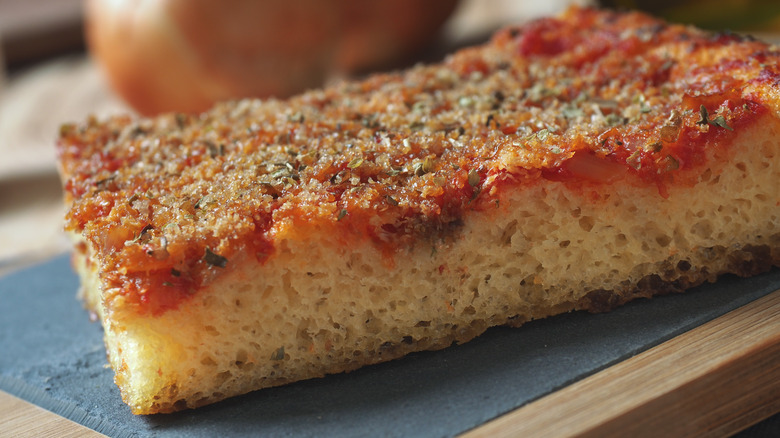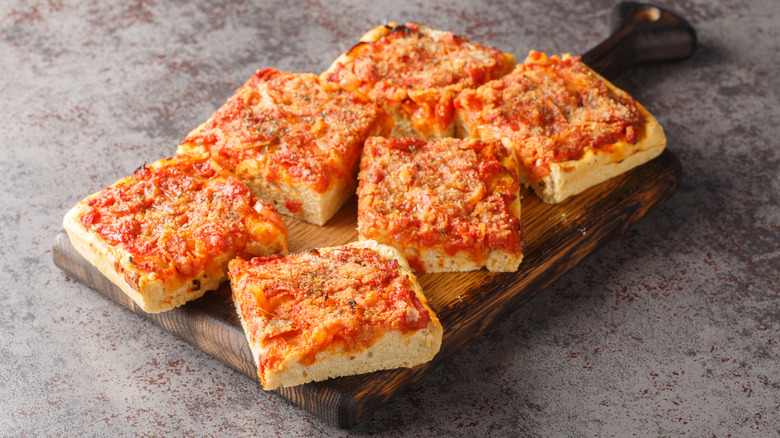The Origin Story Of Sicilian-Style Pizza
If you've never tried it, Sicilian-style pizza (aka sfincione in Sicilian) is characterized by its rectangular shape and unique dough: a dense, toothy, focaccia-esque structure made from twice as much flour and three times as much yeast as typically American pizza crust. Sfincione translates to "thick sponge," but in addition to being spongy, this distinctive pie is also golden brown with a crispy bottom, generous chew, and no crust border; the toppings are spread to the edges of the pie.
Sicilian-style pizza might have first originated in Bagheria, a town just outside of Palermo, where Prince Giuseppe Branciforte di Butera retired in 1650. Among the staff at his mansion were the Monsù people, who often whipped up a recipe created by the nuns of the monastery of San Vito. Per the lore, this proto-pizza included toppings like bechamel, peas, and offal, but the retired Prince's staff took a cue from local ingredients and swapped them for sardines caught nearby and locally produced tuma cheese.
By the mid-1800s, sfincione was cemented as a gastronomic staple in Palermo, where it remains a quintessential street food. It gained such raving reviews that, before long, the pizza grew to be traditionally served at Christmas before panettone. But, Sicilian-style pizza wasn't done evolving during its rise to global stardom. Another key change was about to take place, and it's all about the cheese.
Showcasing local ingredients and claiming a pizza history
The star of the show in Sicilian-style pie is the meatless tomato sauce flavored with herbs, onions, and anchovies, which is topped with crispy breadcrumbs and grated cheese, then baked in a deep, well-oiled, square tray. Rather than soft cow's milk mozzarella, the Italian-borne Sicilian-style pie uses a hard grated cheese like parmesan or pecorino, which might have as much to do with Italian ingredient preferences as the fact that most of the milk produced in Sicily comes from goats or sheep. In Italian preparations, it was often sliced tuma, a Sicilian cheese made from raw sheep's milk. Some debate has emerged surrounding whether "authentic" Sicilian-style pizza layers the tomato sauce over the toppings or below them, but both orders are delicious.
Mozzarella entered the picture when Sicilian immigrants brought sfincione with them to the U.S. According to the Library of Congress, roughly 600,000 Italians immigrated to America during the 1890s, and by 1920, the U.S. was home to over four million Italian-Americans, primarily concentrated in New York (likely due primarily to the location of Ellis Island). During the early 1900s, the U.S. dairy cow industry was booming, and Italian bakeries in New York City had easy, affordable access to fresh mozzarella. Sfincione is thought to have evolved from focaccia, and Detroit-style pizza is believed to have subsequently evolved from sfincione — which is easy to make at home for a delicious taste of culinary history.

